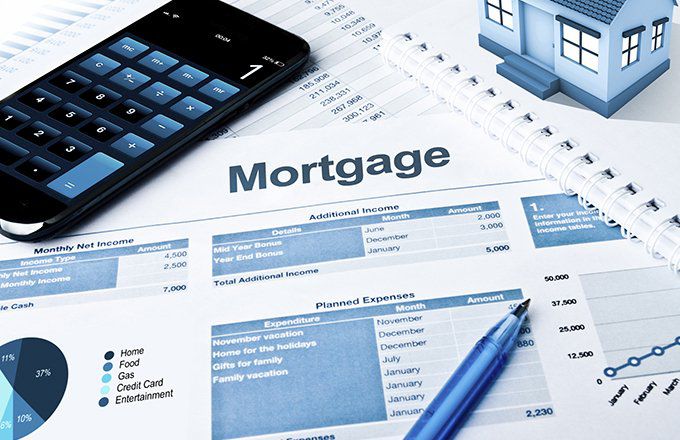
How Do Rising Interest Rates Impact Your Mortgage Payment?
A slight increase in your mortgage interest rate can significantly increase your mortgage payment amount. Here’s what you need to know.
After months of historically low interest rates throughout the pandemic, the Fed has announced that they will be rising interest rates in 2022 to combat inflation.
All homebuyers are probably wondering how this will affect their mortgage payments — especially if it’s your first time buying, and you’re not that clear on how interest rates impact your experience as a homeowner.
Let’s take a deeper look at what the rising interest rates mean for first-time homebuyers, what you should be watching, and how they could impact your loan over time.
What Makes up a Mortgage Loan and Mortgage Payment?
It’s important to understand that your mortgage loan costs more than just the amount that you’re borrowing to fund the purchase of your new home.
- The amount of money that you borrow to pay off the property’s cost is called the principal balance.
- The fee charged to homebuyers by mortgage lenders for lending out the funds is interest.
- Homebuyers are also charged additional taxes, fees, and sometimes insurance costs.
These three categories — principal, interest, and fees — are the three parts of a mortgage loan.
The principal balance, or what you’re borrowing to pay off the price tag of your new home, is the largest portion of your mortgage loan. Interest is next, contributing a substantial portion to the overall amount you repay to the lender to close out the loan. Fees, taxes, and insurance are generally the smallest portion of your mortgage loan in terms of the overall cost.
Your total loan amount is bundled together by your lending officer and broken up into manageable monthly payments.
Each monthly payment contains a portion of the different loan categories, but they do not always break up evenly. This is explained by mortgage amortization, which is the way that lenders divide mortgage payments to ensure that, by the end of the loan’s lifecycle, all of the balances have been paid off.
How Do Interest Rates Impact Mortgage Payments?
Interest rates are one of the biggest expenses that contribute to your mortgage loan.
That said, higher interest rates create a more expensive mortgage payment. If your interest rate is high, you will end up paying more toward your mortgage over the entire lifetime of your loan — which is generally 30 or 15 years.
Similarly, lower interest rates give homebuyers access to a more affordable mortgage. A lower interest rate percentage being charged on your loan will reduce your monthly payments, as well as the total amount that you pay for your mortgage loan over its term.
Even a small change in interest can make a big difference in the amount you pay back month-to-month and over the years.
Crunching the Numbers: Comparing Mortgage Rates
Here are some example calculations to help you see how interest rate adjustments affect the total cost of your loan.
First, let’s look at how the down payment amount can reduce the principal balance owed to impact total interest costs on the same loan:
- For a 30-year mortgage loan that is purchasing a home for $250,000 with a $25,000 down payment at 5.00% interest, total interest paid to the loan is $209,825.
- For a 30-year mortgage loan that is purchasing a home for $250,000 with a $50,000 down payment at 5.00% interest, total interest paid to the loan is $186,513.
By paying an additional $25,000 on the down payment amount, total interest is reduced by $23,312.
Now, let’s look at how slight changes in interest rates impact the total amount of interest paid on the same loan.
- For a 30-year mortgage loan that is purchasing a home for $250,000 with a $50,000 down payment at 4.00% interest, total interest paid to the loan is $143,739. Monthly mortgage payments for bundled principal and interest total $955 per month.
- For a 30-year mortgage loan that is purchasing a home for $250,000 with a $50,000 down payment at 3.00% interest, total interest paid to the loan is $103,555. Monthly mortgage payments for bundled principal and interest total $843 per month.
- For a 30-year mortgage loan that is purchasing a home for $250,000 with a $50,000 down payment at 2.00% interest, total interest paid to the loan is $66,126. Monthly mortgage payments for bundled principal and interest total $739 per month.
From a 4.0% interest rate to a 2.0% interest rate on the same loan, the difference in total interest paid is $77,613 over the course of 30 years. The difference in monthly payment amounts is $216, and $2,592 annually.
What First-Time Buyers Should Keep in Mind
As you prepare to take out a mortgage to buy your first home, you should seek the lowest possible interest rate that you qualify for to help you save money — both month to month, and over time.
With interest rates on the rise, it’s a good idea to follow best practices that help you qualify as a strong borrower. Remember, mortgage lenders apply higher interest rates to loans that they view as higher-risk investments. If you’re able to apply with strong credit history and a significant down payment, you’re on the right track to accessing preferable interest rates.
You also might want to take action quickly so you can possibly secure a lower interest rate before future rate hikes come into effect. To get started with your home purchase, find your perfect real estate agent with RealEstateAgents.com.





